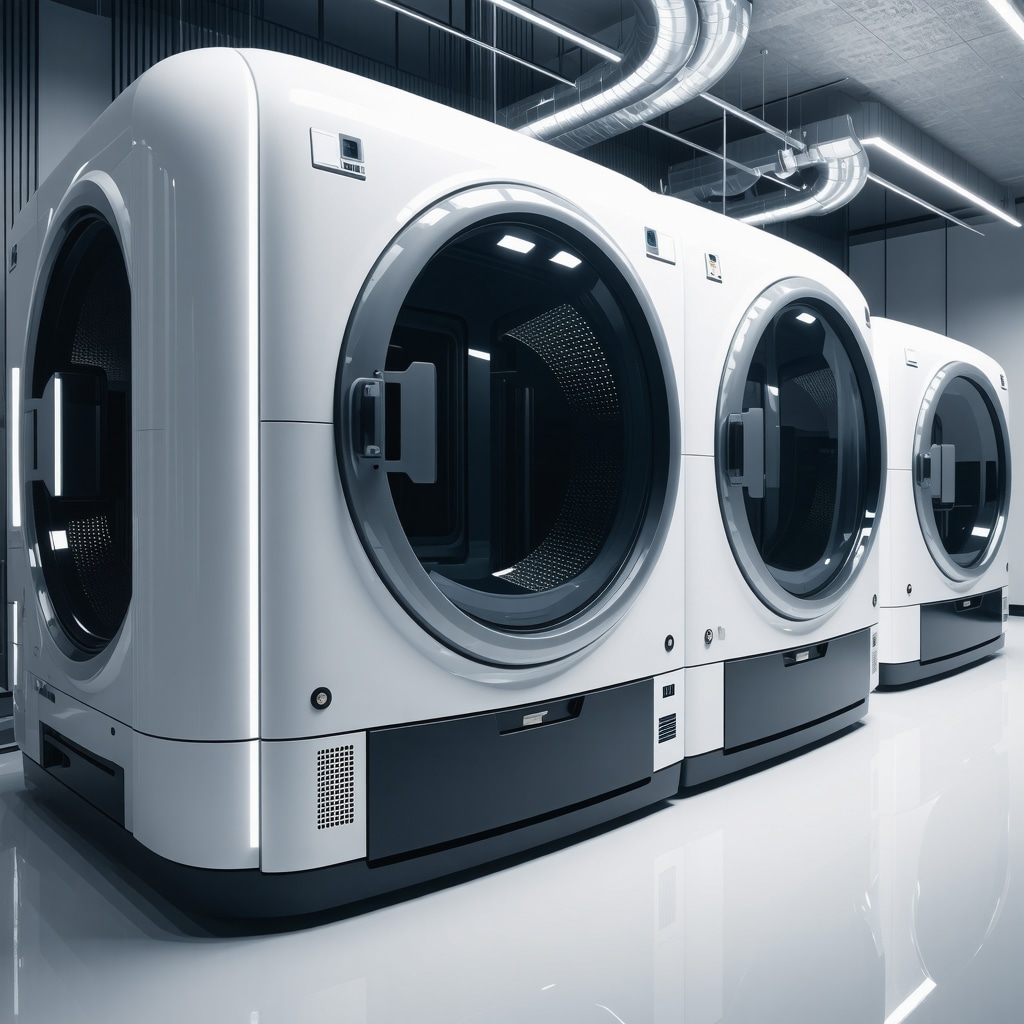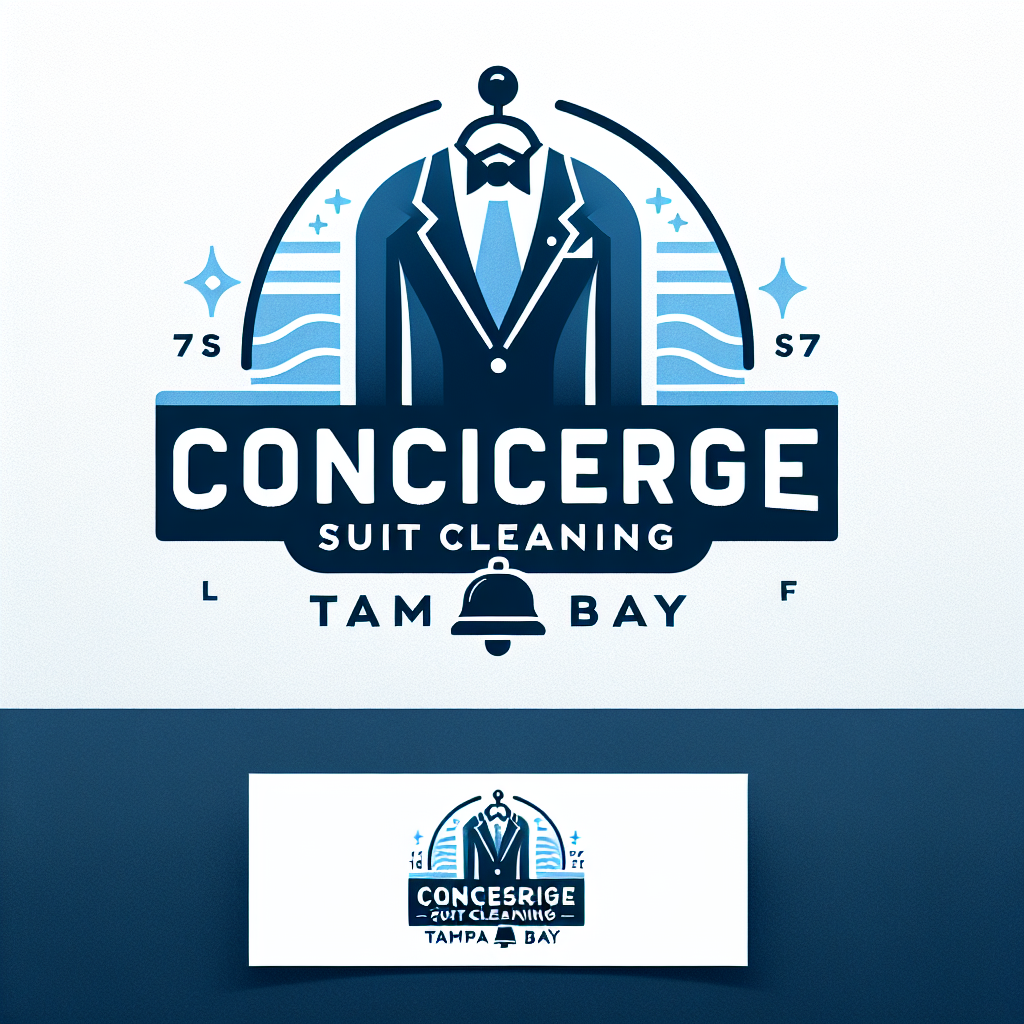Enhancing Sustainability in Formalwear Maintenance: The Expert’s Perspective
In the evolving landscape of sustainable fashion, the significance of eco-friendly suit dry cleaning cannot be overstated. As industry experts, we recognize that choosing environmentally responsible cleaning methods not only preserves the integrity of high-quality fabrics but also aligns with broader ecological goals. This article delves into the multifaceted benefits of eco-friendly suit dry cleaning, highlighting its role in promoting sustainability, safeguarding fabric longevity, and reducing environmental impact.
Why Eco-Friendly Suit Dry Cleaning Is a Strategic Choice for Discerning Professionals
How Does Eco-Friendly Dry Cleaning Differ from Conventional Methods in Ensuring Fabric and Environmental Integrity?
Traditional dry cleaning often relies on perchloroethylene (PERC), a solvent associated with environmental and health concerns. In contrast, eco-friendly dry cleaning employs biodegradable, non-toxic solvents such as hydrocarbons or liquid carbon dioxide, which effectively remove stains without compromising fabric quality or posing ecological risks. This approach exemplifies a conscious choice for professionals who value both garment longevity and environmental stewardship, as supported by recent studies published in the Journal of Cleaner Production.
Moreover, eco-friendly cleaning solutions often involve less water and energy consumption, aligning with sustainable operational practices. This not only minimizes chemical runoff but also reduces the carbon footprint associated with garment maintenance, reinforcing the importance of integrating green practices within luxury and formalwear care.
The Impact of Eco-Friendly Cleaning on Suit Longevity and Appearance
Expertly executed eco-friendly dry cleaning extends the lifespan of suits by preserving delicate fibers and preventing chemical degradation. The gentle yet effective cleaning process maintains the fabric’s structural integrity, ensuring that suits retain their shape and appearance over multiple wears. For instance, when selecting a local eco-friendly suit dry cleaning service, professionals observe notable improvements in fabric resilience and color retention.
Furthermore, the absence of harsh chemicals reduces the risk of residual odors or fabric damage, which is critical for high-stakes occasions like interviews or formal events. This aligns with the insights from industry leaders emphasizing sustainable practices that prioritize garment care without compromising quality.
What Are the Challenges and Debates Surrounding Eco-Friendly Suit Cleaning?
While the benefits are compelling, some debate persists regarding the cost-effectiveness and accessibility of eco-friendly dry cleaning. Critics argue that adoption may involve higher operational costs, which could translate to increased prices for consumers. However, the long-term benefits—such as extended garment durability and reduced environmental harm—often outweigh initial investments, especially for institutions committed to sustainability.
Ongoing research and technological advancements continue to improve the efficiency and affordability of eco-friendly solvents, making sustainable suit cleaning more accessible for a broader audience. For further insights, consult the comprehensive review on sustainable dry cleaning innovations.
Take Action: Elevate Your Suit Care with Green Practices
Professionals and eco-conscious consumers are encouraged to explore local providers specializing in eco-friendly suit dry cleaning. By choosing sustainable options, you actively contribute to reducing chemical pollution, conserving resources, and promoting a circular economy in fashion. For tailored expert advice or to schedule a consultation, visit our contact page.
Embracing eco-friendly suit dry cleaning is not merely a trend but a strategic move towards responsible and resilient fashion practices. As the industry evolves, staying informed and making conscious choices will ensure that your wardrobe remains both stylish and sustainable.
Reimagining Suit Care: The Role of Advanced Eco-Friendly Technologies
As sustainability becomes an integral part of luxury fashion maintenance, industry leaders are pushing the boundaries of eco-friendly suit cleaning through innovative technologies. These advancements not only enhance cleaning efficiency but also ensure the preservation of delicate fabrics, aligning with the values of environmentally conscious consumers. One such breakthrough is the application of liquid carbon dioxide cleaning, which uses pressurized CO2 to remove dirt and stains without water or harmful chemicals, significantly reducing water consumption and chemical waste. This method exemplifies the future of sustainable garment care, providing a deep clean while maintaining fabric integrity.
How Can Industry Experts Leverage Emerging Eco-Technologies to Elevate Suit Maintenance?
Experts in the field are exploring the integration of nanotechnology-based stain repellents and biodegradable solvents to optimize eco-friendly cleaning processes. Nanotechnology can create a protective barrier on fabrics, making suits more resistant to stains and extending the intervals between cleanings. Additionally, biodegradable solvents derived from renewable resources are increasingly effective at removing stubborn stains, offering a greener alternative to traditional chemicals. These innovations are backed by research published in the Journal of Cleaner Production, underscoring their potential to revolutionize sustainable dry cleaning.
Furthermore, industry experts are advocating for the adoption of smart cleaning systems equipped with sensors that monitor fabric condition in real-time. Such systems can customize cleaning cycles based on actual need, reducing unnecessary treatments and conserving resources. This data-driven approach not only enhances garment longevity but also aligns with principles of sustainable operational efficiency.
What Are the Ethical and Practical Implications of Adopting Cutting-Edge Eco-Friendly Suit Cleaning Technologies?
Adopting innovative eco-friendly practices raises important questions about accessibility, cost, and industry standards. While the initial investment in advanced technologies may be higher, the long-term benefits include reduced environmental impact and superior garment care. For professionals seeking trusted, sustainable solutions, partnering with providers that embrace these innovations—like luxury suit cleaning services in Westchase, FL—can be a strategic move towards responsible fashion stewardship.
Would you like to learn more about how eco-friendly suit cleaning can be integrated into your wardrobe maintenance routine? Share your thoughts or questions in the comments, or explore further with our recommended reading on eco-friendly suit dry cleaning in Tampa.
Harnessing Next-Generation Eco-Friendly Solutions for Premium Suit Care
As the demand for sustainable fashion intensifies, industry leaders are pioneering revolutionary technologies that redefine the standards of eco-conscious suit dry cleaning. From supercritical CO2 extraction to nanotechnology-enhanced fabric treatments, these innovations promise to elevate garment longevity while minimizing environmental impact. Implementing such forward-thinking methods requires a nuanced understanding of both their scientific foundations and practical applications, positioning professionals at the forefront of sustainable luxury maintenance.
Supercritical CO2: The Green Solvent of the Future
One of the most promising advancements is the utilization of supercritical carbon dioxide, a state of matter where CO2 exhibits unique solvent properties. This method operates at relatively low temperatures and avoids toxic chemicals, offering a deep-clean process that preserves fabric integrity and prevents chemical residue buildup. According to a comprehensive review published in Environmental Science & Technology, supercritical CO2 cleaning drastically reduces water and chemical waste, aligning with the principles of circular economy and zero-waste initiatives.

Nanotechnology: Creating Stain-Resistant and Self-Healing Fabrics
The integration of nanotechnology introduces a new paradigm in suit maintenance. Nano-coatings can form a protective barrier on fabric surfaces, making suits inherently resistant to stains, water, and dirt. Furthermore, self-healing nanostructures are being developed to autonomously repair minor fabric damages, extending the lifespan of high-end garments. This approach not only reduces cleaning frequency but also minimizes fabric degradation over time, a critical factor for maintaining suit appearance and structural integrity over multiple wears.
Research from the Journal of Cleaner Production underscores the potential of nanotech-enhanced textiles to revolutionize sustainable fashion care, emphasizing environmental benefits and enhanced garment performance.
Real-Time Fabric Monitoring: Intelligent Systems for Optimal Care
Emerging smart systems equipped with embedded sensors are set to transform maintenance routines. These sensors continuously monitor fabric condition, detecting soil levels, fiber fatigue, and environmental exposure. Coupled with AI-driven analytics, such systems can determine precisely when cleaning is necessary, avoiding unnecessary treatments that compromise fabric quality. This data-driven approach ensures optimal garment care, reduces resource consumption, and aligns with Industry 4.0 principles of automation and precision.
For example, companies like luxury suit cleaning providers in Westchase, FL are beginning to incorporate sensor technology into their service models, setting new standards for sustainable, intelligent garment care.
What are the practical challenges and ethical considerations associated with deploying nanotechnology and smart systems in high-end suit maintenance?
While these technologies offer immense benefits, they also raise questions about accessibility, cost barriers, and long-term fabric safety. Balancing innovation with affordability and ensuring that eco-friendly practices are scalable remains a key concern for industry stakeholders. Engaging with rigorous testing protocols and transparent industry standards will be crucial in addressing these challenges. For further insights, consult studies from leading research institutions.
If you’re eager to incorporate these advanced technologies into your suit care routine, consider collaborating with certified providers who specialize in sustainable, innovative cleaning solutions. Explore more at our contact page for expert guidance.
The Future Outlook: Sustainability as the Cornerstone of Premium Suit Maintenance
As technological innovation continues to accelerate, the integration of eco-friendly solvents, nanotech coatings, and intelligent monitoring will become standard in high-end suit care. These advancements not only enhance garment durability and appearance but also reinforce the industry’s commitment to environmental responsibility. Professionals poised to adopt these cutting-edge solutions will position themselves as leaders in sustainable fashion maintenance, offering clients unparalleled quality with a conscience.
Harnessing Supercritical CO₂: The Next Frontier in Eco-Conscious Suit Cleaning
Supercritical carbon dioxide (CO₂) cleaning represents a pivotal advancement in sustainable garment care, utilizing a state where CO₂ exhibits properties of both a liquid and a gas. This method operates at relatively low temperatures, eliminating the need for toxic solvents and significantly reducing water and chemical waste. According to a detailed analysis in Environmental Science & Technology, supercritical CO₂ not only minimizes ecological impact but also ensures a meticulous clean, preserving fabric integrity and color vibrancy for extended periods. Implementing supercritical CO₂ systems in professional dry cleaning facilities exemplifies a commitment to innovation and environmental responsibility, setting new standards in luxury suit maintenance.
Nanotechnology: The Future of Self-Healing and Stain-Resistant Fabrics
Nanotechnology integration is revolutionizing textile treatments, enabling fabrics to become inherently resistant to stains, water, and dirt. Nano-coatings form protective barriers that repel liquids and prevent fabric deterioration, while emerging self-healing nanostructures autonomously repair minor damages, significantly extending the lifespan of high-end suits. This innovation is underscored by research in Journal of Cleaner Production, which highlights the environmental and performance benefits of nano-enhanced textiles. Adopting nanotech treatments not only reduces cleaning frequency but also maintains the pristine appearance of garments over multiple wears, aligning with sustainability and luxury standards.
Smart Fabric Monitoring: Precision Garment Care through Real-Time Data
Emerging intelligent systems equipped with embedded sensors are transforming suit maintenance, providing continuous monitoring of fabric condition, soil accumulation, and fiber fatigue. Coupled with AI-driven analytics, these systems optimize cleaning cycles—performing only when necessary—thus conserving resources and preventing unnecessary wear. Pioneering companies like luxury suit providers in Westchase, FL are integrating such technologies, leading the industry toward a new era of sustainable, data-driven garment care. By embracing these innovations, professionals can ensure optimal fabric longevity and environmental stewardship simultaneously.
What are the ethical and practical considerations when deploying nanotech and smart monitoring in high-end suit maintenance?
While these technologies promise remarkable benefits, challenges related to cost, accessibility, and fabric safety must be addressed. Ensuring scalability and industry-wide standards will be essential for widespread adoption. Engaging with transparent testing protocols and regulatory frameworks, as emphasized by leading research in sustainable textile science, will facilitate responsible deployment. Professionals committed to innovation should prioritize partnerships with certified providers employing these advanced systems to maximize sustainability and garment quality.
If you’re ready to elevate your suit maintenance routine with cutting-edge eco-technologies, explore our contact page for expert guidance and tailored solutions.
Envisioning a Sustainable Future: Industry’s Role in Eco-Driven Suit Care Evolution
As technological innovations continue to evolve, the integration of supercritical CO₂, nanotech coatings, and intelligent monitoring systems will become standard practices in luxury suit maintenance. These advancements not only bolster garment durability and aesthetic appeal but also reinforce the industry’s dedication to environmental responsibility. Forward-thinking professionals who adopt these solutions will position themselves as leaders in sustainable fashion, offering clients exceptional quality with minimal ecological impact, thus shaping the future landscape of high-end garment care.
Expert Insights & Advanced Considerations
Innovative Technologies Are Redefining Suit Maintenance
Leading industry experts emphasize the transformative impact of supercritical CO2 cleaning and nanotechnology in elevating suit care standards. These innovations not only improve cleaning efficacy but also significantly extend the lifespan of high-end garments, aligning with sustainability goals.
Integrating Smart Monitoring for Precision Care
Emerging sensor-based systems enable real-time monitoring of fabric condition, optimizing cleaning cycles and reducing unnecessary treatments. This data-driven approach enhances garment longevity and operational efficiency, setting new benchmarks in eco-conscious fashion maintenance.
Balancing Cost and Environmental Impact
While initial investments in advanced eco-technologies may be higher, industry leaders advocate for their long-term benefits, including reduced chemical usage and waste. Strategic partnerships with providers employing these innovations can deliver both sustainability and superior garment care.
Ethical Considerations in Tech Adoption
Adopting nanotech and smart systems raises questions around accessibility, fabric safety, and industry standards. Rigorous testing, transparent protocols, and scalable solutions are essential to ensure responsible deployment across the luxury garment sector.
Future Outlook: Sustainability as a Core Industry Value
The integration of eco-friendly solvents, nanotechnology, and intelligent systems signifies a paradigm shift towards sustainable luxury fashion. Professionals embracing these advancements will lead the market, combining excellence with ecological responsibility.
Curated Expert Resources
- Environmental Science & Technology Journal: Offers comprehensive reviews on supercritical CO2 cleaning and nanotech innovations, supporting evidence-based practices.
- Journal of Cleaner Production: Provides cutting-edge research on sustainable textile treatments and eco-friendly solvents, essential for industry advancement.
- Industry Standards and Certification Bodies: Ensure compliance with safety, environmental, and quality benchmarks, crucial for responsible innovation adoption.
- Professional Associations in Textile and Garment Care: Offer insights, training, and networking opportunities to stay at the forefront of eco-technologies.
Final Expert Perspective
Advancing sustainable suit dry cleaning requires a nuanced understanding of emerging eco-technologies and their strategic implementation. Embracing innovations like supercritical CO2 and nanotech, combined with real-time fabric monitoring, positions industry leaders as pioneers in eco-conscious luxury care. For professionals committed to excellence and sustainability, partnering with certified providers and engaging with authoritative resources will be pivotal. If you’re eager to deepen your expertise or explore tailored solutions, visit our contact page to connect with industry leaders dedicated to sustainable garment care.


This article offers a comprehensive overview of how eco-friendly practices are reshaping high-end suit care. I particularly appreciate the emphasis on innovative technologies like supercritical CO2 and nanotech coatings, which seem to be game-changers for both sustainability and longevity. From personal experience managing a clothing boutique, I’ve seen that clients are increasingly interested in environmentally responsible cleaning options without sacrificing quality. The challenge, as the article points out, is making these advanced methods more accessible and cost-effective in the long run. In my opinion, collaborative efforts between tech developers and traditional dry cleaners could accelerate this transition. Do others here think that industry standard certifications or government incentives could help broaden adoption of these eco-technologies? It’s clear that sustainable luxury isn’t just a trend but a necessary evolution for our industry.
I’ve been following the development of supercritical CO₂ cleaning for a while now, and it’s impressive how much it can reduce water and chemical waste compared to traditional methods. From my experience working with eco-conscious clients, there’s a real demand for such advanced, sustainable options, but often the higher initial costs are a barrier. I wonder if industry-wide certifications for eco-friendly practices could help normalize these methods and make them more appealing to a broader clientele. Additionally, integrating smart monitoring and nanotech treatments seems promising for not only prolonging suit life but also reducing cleaning frequency. Has anyone here had firsthand experience with implementing these technologies in a small or medium-sized dry cleaning operation? What were the biggest challenges in adoption, and how did you overcome them? It’s exciting to see how these innovations can reshape luxury garment care for the better, but widespread adoption will definitely require strategic partnerships and perhaps policy incentives.
This article really highlights the potential of emerging eco-friendly technologies like supercritical CO₂ and nanotech treatments in elevating sustainable suit care. I’ve personally started to explore nanotech coatings for some of my high-end garments, and the results have been promising—especially in repelling stains and making fabrics easier to clean without harsh chemicals. However, I’m curious about the long-term durability of these nanotech applications. Has anyone here had experience with their longevity over multiple wears and cleans? Also, from an operational perspective, integrating smart fabric monitoring sounds innovative, but I wonder about the costs and training required for smaller dry cleaning shops to adopt such systems. Do you think industry standards or broader certification programs will help drive wider acceptance and affordability? It seems clear that embracing these innovations is essential for aligning luxury garment care with our sustainability commitments, but widespread implementation will require strategic efforts and perhaps policy support.